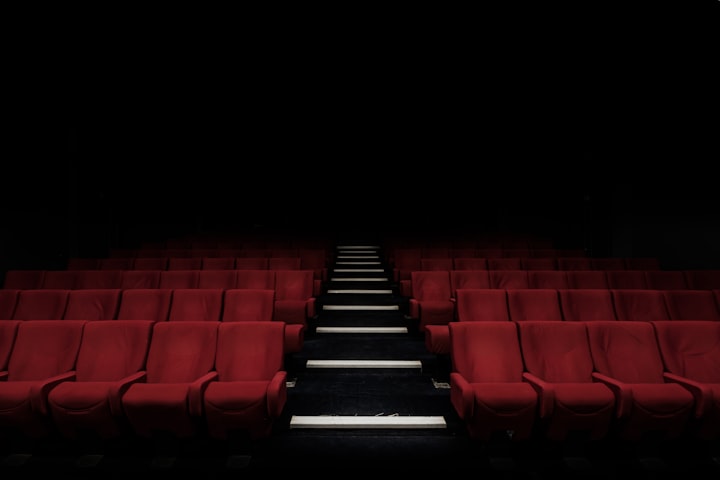
"People always talk about Hitchcock, who was very influential, but I find that not many people follow the Hitchcock genre, except me. He created these incredible narratives, and they all died with him. And I'm a practitioner, picking up what he started and building it into new forms, in my own evolving style, which is like a modern version of what he created." As the most loyal follower and promoter of Hitchcock, it would be too much to underestimate the innovation and pioneering of The film language of Parma if he only regarded as a disciple of Hitchcock.
"Split-screen is a technique that allows the viewer to look at two images at the same time, and something is going on in their mind. You're giving them a juxtaposed and opposed perspective. Split-screen is a technique that gives you an unusual experience." Split screen, in a broad sense, refers to the simultaneous presentation of multiple screen contents on the screen, so as to meet the needs of the director in narrative level and even create dramatic tension, and Parma is the most representative director.
one Juxtaposed dual perspectives complement the limitations of a single perspective and emphasize relevance
In one of the most famous films of all time, Carrie, Parma used split screen to perform a great PROM massacre. As Carrie's third-party perspective moves in close range, on the other side of the picture is the terrified and even slaughtered student. If the split screen on one side of the students will be considered a subjective perspective of Carrie, so the split screen play contains subjective perspective view with a third party at the same time, double perspective of added by the limitations of a single perspective, make two different Angle of view in a single scene at the same time, at the same time will slaughter play with Carrie's point of view, further enhance the relevance of the collocation picture, Alluding to Carrie's divinity.

In the early series, the police came to Danielle's house after being tipped off by a female reporter. Parma using a split screen shot here, will the female journalist danielle, police, three people in the same scene, give up the usual use of the positive and negative lens, take the split screen at the same time to present the same time the two sides in the same scene and viewpoint, digestion and reverse play because of a single lens and the abrupt and jump, maintain the integrity of the dialogue scenes.

two The juxtaposition of dual perspectives accentuates the "exposure" of suspense events and renders the tense atmosphere of different characters in different Spaces at the same time
In Sisterhood, the assassinated man climbs to the window, and the scene splits into two. On the right is the man struggling to move and reach the window, and on the left is the view from a window across the street. As the camera pulls back to the left, a woman watching the murder appears. This split screen drama makes use of two third-party objective viewpoints to present the murder case completely in front of the audience, while the audience actually completes the double "peeping" of the murder by borrowing the third-party viewpoints of the woman snooping on the murder to some extent, that is, the woman snooping on the murder and the audience snooping on the woman snooping on the murder. The double peeping presented with the help of the double perspective not only makes the mystery event completely exposed, but also produces a new mystery characteristics, namely: peep whether the murdered woman has been found, and how the murdered man will be dealt with?

3. Use television images to give clues and enhance the theme
In the classic razor's Edge, Parma gives Blake a split screen while he talks on the phone, while Michael Caine's doctor watches a TV show. A transgender interview with Nancy Hart was on, and Blake ended the call, sat down in the mirror, looked at himself and watched at the same time, and the double perspective of Blake and Dr. Elliott watching the same TV show was revealed to the audience. Meanwhile, on TV, "Do you like to play the traditional role of father", "I have always been a supporter of heterosexual relationships", the sketch of a few lines, coupled with the gaze of Elliot in the split screen, and even Blake in his dressing up, all subtly alluded to the themes of patriarchy and cross-dressing.

The split-screen shot in "Thread" shows Terry, a sound engineer for the film, at work early in the film, while the television screen on the right broadcasts the news. The news of Philadelphia's Freedom Day celebration is complemented by the sound production and finishing of Terry on the left, whose job is to record sound effects for low-budget horror films. Given the ending of Sally's murder at the Freedom Day celebration, this split-screen shot is very subtly intertexted with subsequent plot developments. At the same time, the murder at the end, to some extent, represents Parma's disappointment and helplessness from video to reality. This splitscreen shot makes use of the juxtaposition of film production (video) and TV news (reality), in fact, alludes to the opposite attributes of the two, which are also magnified with the end of the news program. It ends with the TV picture shrinking into a corner and moving out of the frame.

"The split lens can make the foreground and the rear, or even the close and distant objects in the same plane clear at the same time by adding a split lens, presenting a visual sense that does not conform to human eyes."
one The use of split focus to present multiple subject and object, enhance the subject and object relationship in the same picture, play a potential role of supplementary information and details, and hint the subsequent development of the story through the capture of the rear object. The multiple cracks in Carrie have this effect.
This splitting occurs during Carrie's class, when the teacher asks the class for their opinion after reading Tommy's article in public. A close-up of Tommy in the foreground dominates the screen, while the camera captures the silent Carrie in the background. The silent treatment of the object Carrie just implies Carrie's subsequent comments on Tommy's article. As the subject of the camera, Tommy is also bored by Carrie's behavior. The subject-object relationship is intensified at this moment through splitting focus. On the other hand, tommy's close-up takes up half of the whole screen, while Carrie shrinks and retreats to the last part of the shot. Carrie's state of being bullied and her naturally sensitive and depressed personality are conveyed in a very oppressive way through the split lens.

two The split lens is used to present the character's active and passive "peep" attributes in the same time and space state, and the arrival of crisis is implied through the potential peep.
As the faithful successor and promoter of Hitchcock, "voyeurism" has always been its constant matrix and element. Parma also uses the lens splitting to place the characters in active or passive "peep" situations.
After being questioned at the hospital and experiencing distrust from the police, Terry, who saves Sally from drowning, enters a chaotic hallway. At this point, Parma cracks terry's profile into focus and occupies the left side of the screen, while the two police officers who are whispering to Terry are placed on the right. The narrator, as the subject, is compressed into the foreground, while Terry, as the passive listener, occupies the foreground. The back-and-forth inversion of the subject-object relationship is skillfully combined with parma's "peep" element, and at the same time amplifies terry's feelings of finding the police mistrustful and even suspicious.

The second set of split-focus treatments in "The Line" occurs in the scene where Sally is followed. Tracker in the close shot of Sally photos with the vision of an elevator Sally constitute a very perfect crack prime lens, it is also a "potential peer" is the most perfect play a scene, is both intuitive to show the whole process of the tracker peep at Sally, at the same time, with the potential peer refers to Sally will face the next crisis. Crack focal processing here is far from the end, in the process of tracking the woman, there is a group of dead fish sold in the market and blurred woman moving crack focal lens. The murder tools slowly picked up and the woman's back just constitute the most intuitive processing of snooping and even tracking, while the picture of dead fish more strongly indicates the crisis to be staged next.


In "The Thread," Terry is able to track down Sally's departure direction using a listening device attached to her body. At this time, through a split lens, on the left is Terry listening, and along with Sally saying "Frank Bridge Express", on the right side of the picture appears the logo of frank Bridge Express leading to the freedom Day celebration. The crack here not only directly shows the eavesdropping attributes of Terry, but also quickly and neatly brings out the scene of the subsequent development of the plot through the logo, as well as the arrival of the crisis and tragedy at the end.

About the Creator
JOKER
I thought my life was a tragedy. But now I realize it was a comedy






Comments
There are no comments for this story
Be the first to respond and start the conversation.